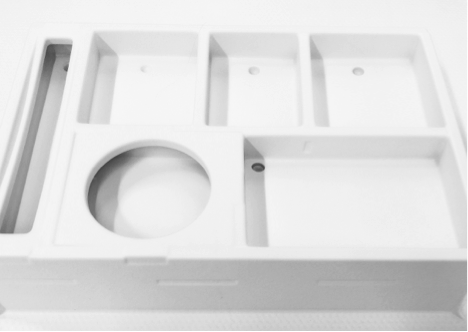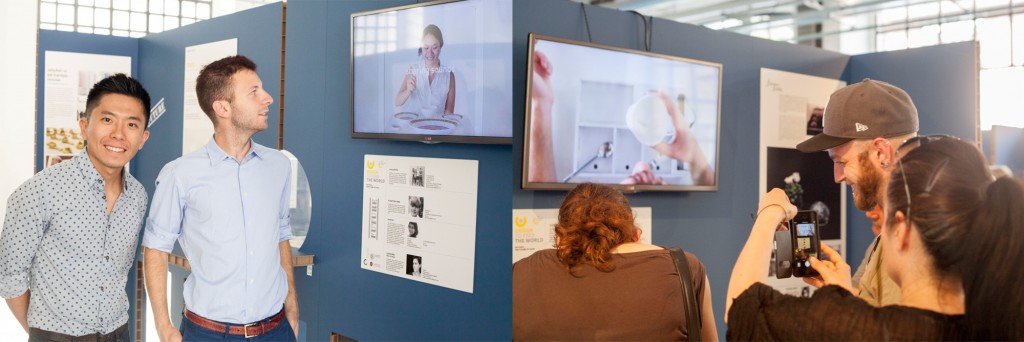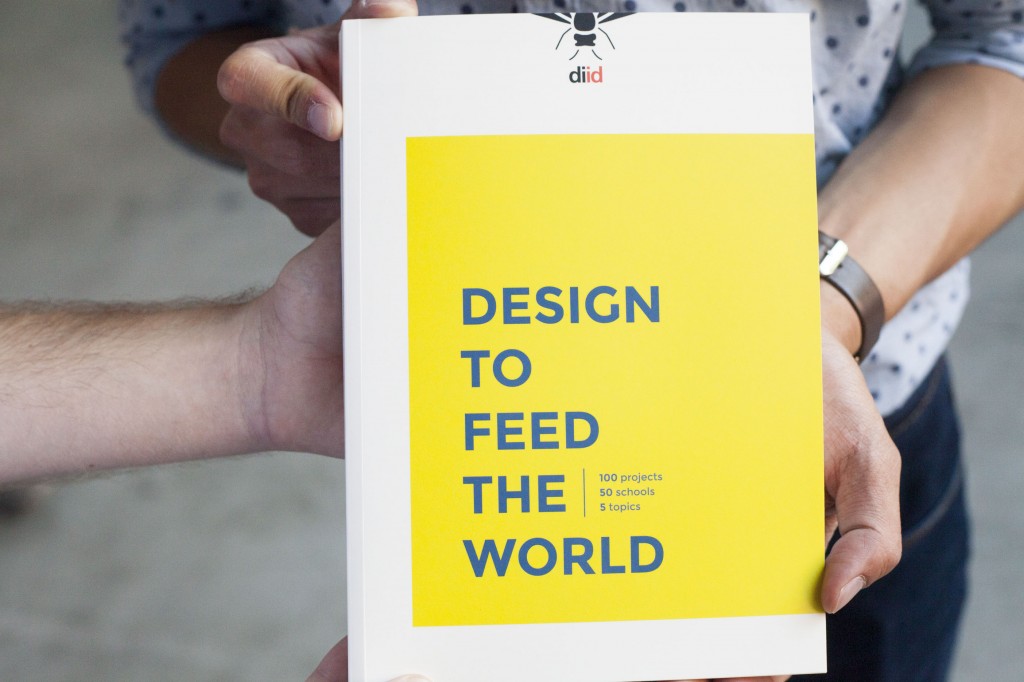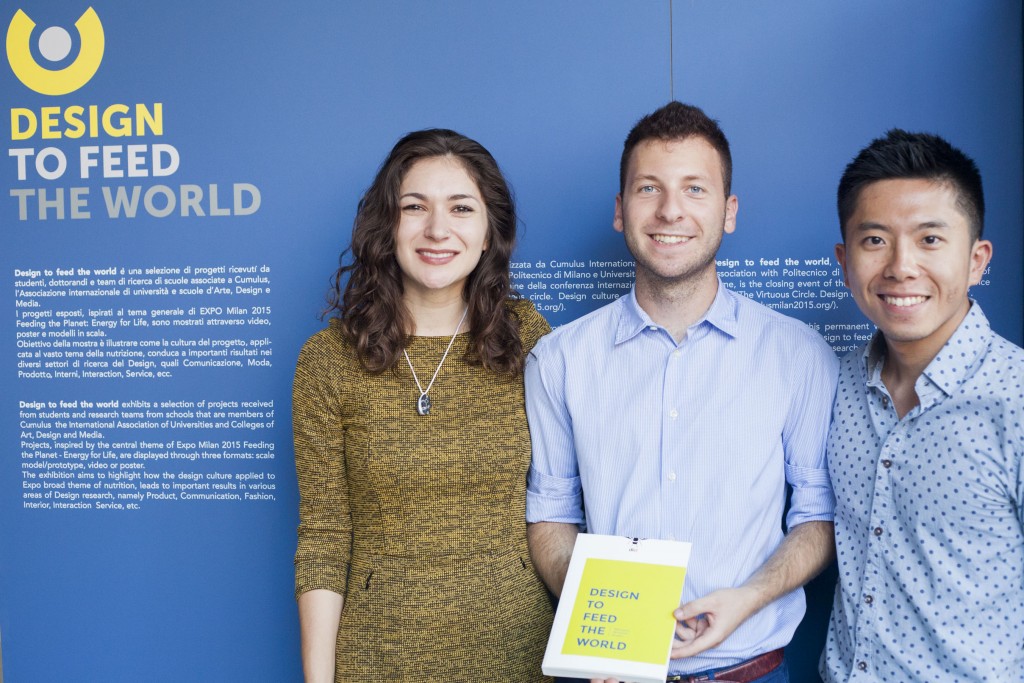In this blog post, Erika Katrina Barbosa (MDP+Field) reflects on her recent trip to Milan for the Cumulus, Design To Feed the World Exhibition, where she along with her fellow designers Josh Bookman, Nan Tsai and Elaine Cheung showcased their forkCHESTRA project.
Erika Katrina Barbosa is a designer and multimedia anthropologist. She works across disciplines with an emphasis on communication and experience design and the creation of multimedia ethnographies. Her media installations have dealt with the psychological affect of urban-waterway infrastructure, and the embodied experience of social constructs such as race, gender, and class. She is currently experimenting with performance art and motion capture in East Africa and Los Angeles to explore the subjective experience of travel. Her work has exhibited in Los Angeles, Manchester, Calgary and Milan. Follow her here. See her stuff here. Or get in touch.
 The World Exposition in Milan is now two months underway, with thousands of design and art professionals from 140 countries contributing to a global dialogue around nutrition and environmental resources. The central theme is officially called Feeding the Planet, Energy for Life, exploring food quality and the whole gamut of challenges we face when harnessing earth’s resources into food. I had the opportunity to participate in this historic World’s Fair (which has been happening since 1851) with three Media Design Practices colleagues from Art Center. Our project, forkCHESTRA was featured in the Cumulus Exhibition, Design To Feed the World alongside 100 projects from 50 international Universities and Colleges of Art, Design and Media. The Cumulus exhibition expanded on the Expo’s central theme by curating the projects around 5 ‘thematic routes’: The history humankind, The history of food; Feast and Famine, a contemporary paradox; The future of food; Sustainable food = equitable world; Taste is knowledge.
The World Exposition in Milan is now two months underway, with thousands of design and art professionals from 140 countries contributing to a global dialogue around nutrition and environmental resources. The central theme is officially called Feeding the Planet, Energy for Life, exploring food quality and the whole gamut of challenges we face when harnessing earth’s resources into food. I had the opportunity to participate in this historic World’s Fair (which has been happening since 1851) with three Media Design Practices colleagues from Art Center. Our project, forkCHESTRA was featured in the Cumulus Exhibition, Design To Feed the World alongside 100 projects from 50 international Universities and Colleges of Art, Design and Media. The Cumulus exhibition expanded on the Expo’s central theme by curating the projects around 5 ‘thematic routes’: The history humankind, The history of food; Feast and Famine, a contemporary paradox; The future of food; Sustainable food = equitable world; Taste is knowledge.

forkCHESTRA TV Dinner Tray. Laser cut/Vacuum formed with Makey Makey microchip installed. © Erika K Barbosa
The forkCHESTRA team includes Josh Bookman and Nan Tsai of the MDP Development year, Elaine Cheung of the MDP Lab track, and myself, from the MDP Field track. Normally we work alongside one another in our shared wind tunnel studio, but this was an opportunity to join forces and share expertise. forkCHESTRA was exhibited within the The future of food because it is a playful proposal to converge networked communication with food design by creating a dining-with-a-device experience that mimics some of the intimacy of real-life communal dining. Part product and part interaction, forkCHESTRA pays unbiased homage to the history of the American TV Dinner, by taking the iconic partitioned TV Dinner tray, and the one-to-one interaction of TV-viewer and TV into a contemporary setting where networked mobile devices replace Televisions. Our TV Dinner tray is built to connect with any cloud-computing device to enable a remotely shared dining experience via a video/audio chat platform. While it’s not unusual to eat in front of a mobile, networked device, the interaction is largely incidental. We wanted to create an interaction that made eating with the device a conscious experience. The tray uses electrical signaling technology to create a conductive table-setting that generates unique auditory sounds based upon the hand movements of the person eating. The sounds are built upon and shared via the cloud, resulting in a soundscape orchestrated by the act of eating.
While forkCHESTRA proposes new possibilities for combining interaction design with the design of eating experiences, the project is really a commentary on the history of American industrial design and its impact on massive models of food production and consumption. We wanted to emphasize the poignant moment when product design, frozen food technology and mass production models created an insurmountable shift in the way Americans prepare and consume food, and of all of the social and cultural changes that came with it. Walking around the Cumulus exhibition, I was fascinated by how many of the projects took a critical look at food’s relationship to aesthetics, culture and social transformations. I was drawn to the beautifully presented speculative and conceptual designs, such as Cuicsa, a product proposal for slow-fast-food that is cooked using mealworms, or WSYB, a smart packaging system that uses RFID technology to communicate product information directly to consumers.
The Cumulus exhibition has been published as a special edition of the Scientific Journal DIID – Disegno Industriale Industrial Design. As a catalogue, these projects are an excellent source for cultural knowledge, environmental concerns and collective global needs pertaining to food systems.



